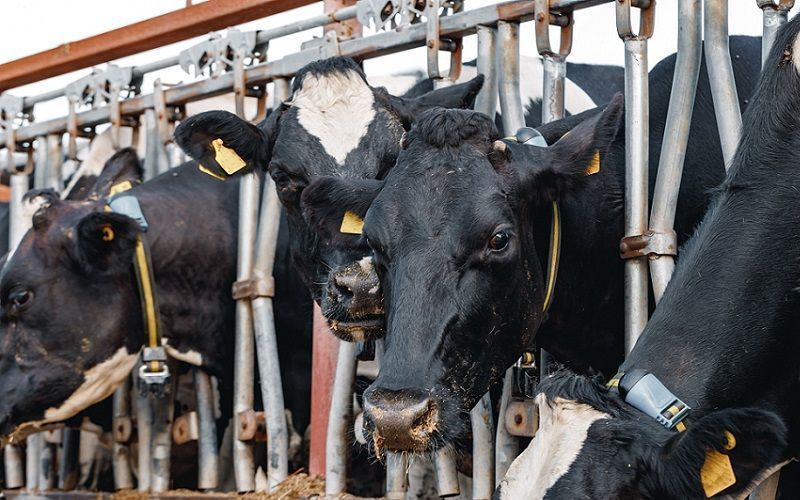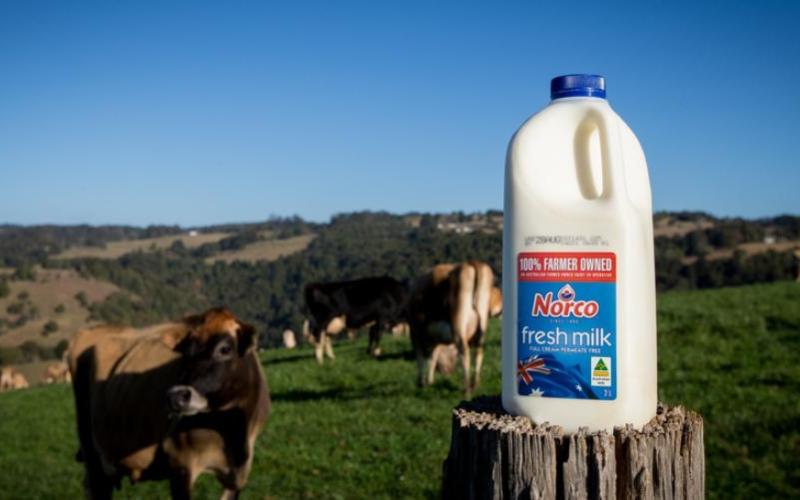USDA Reports Slight Decline in U.S. Milk Production, Improved Dairy Farmer Margins
Sourse: The DairyNews
According to the latest USDA National Agricultural Statistics Service (NASS) data, U.S. milk production in March 2024 fell to 19.603 billion pounds, marking a 1.0 percent decrease from March 2023.

The number of milk cows also dropped by 98,000 heads to 9.335 million. Despite these declines, milk production per cow remained steady at 2,100 pounds.
For the first quarter of 2024, milk production edged up slightly by 0.1 percent year-over-year to total 56.9 billion pounds, even as the average number of milk cows was lower by 85,000 compared to the first quarter of 2023.
March 2024 saw dairy farmers experiencing improved milk-to-feed margins, driven by significantly lower feed costs. The all-milk price averaged $20.70 per hundredweight (cwt), a slight decrease from the previous year. However, reductions in the prices of key feed components such as corn, alfalfa hay, and soybean meal contributed to more favorable economic conditions for dairy producers. Specifically, corn prices dropped by $2.31 per bushel, and soybean meal was down $122.7 per short ton from March 2023.
The milk-feed price ratio in March 2024 improved to 2.17, up from 1.55 a year earlier, indicating better profitability for dairy farmers. The Dairy Margin Coverage program reported a farm milk margin above feed costs of $9.65 per cwt, surpassing the maximum Tier 1 coverage level of $9.50 per cwt.
On the export front, first-quarter figures for 2024 showed mixed results for various dairy products. While cheese and whey protein concentrate exports saw increases, shipments of butter, dry skim milk, dry whey, and lactose were lower compared to the first quarter of 2023. Notably, dry skim milk products experienced a substantial drop of 42.8 million pounds in export volume, although the outlook for these exports remains positive due to continued strong demand from international markets like Mexico.
This data reflects ongoing adjustments within the U.S. dairy sector amidst fluctuating market conditions and shifting consumer preferences, particularly a decrease in domestic consumption.
For the first quarter of 2024, milk production edged up slightly by 0.1 percent year-over-year to total 56.9 billion pounds, even as the average number of milk cows was lower by 85,000 compared to the first quarter of 2023.
March 2024 saw dairy farmers experiencing improved milk-to-feed margins, driven by significantly lower feed costs. The all-milk price averaged $20.70 per hundredweight (cwt), a slight decrease from the previous year. However, reductions in the prices of key feed components such as corn, alfalfa hay, and soybean meal contributed to more favorable economic conditions for dairy producers. Specifically, corn prices dropped by $2.31 per bushel, and soybean meal was down $122.7 per short ton from March 2023.
The milk-feed price ratio in March 2024 improved to 2.17, up from 1.55 a year earlier, indicating better profitability for dairy farmers. The Dairy Margin Coverage program reported a farm milk margin above feed costs of $9.65 per cwt, surpassing the maximum Tier 1 coverage level of $9.50 per cwt.
On the export front, first-quarter figures for 2024 showed mixed results for various dairy products. While cheese and whey protein concentrate exports saw increases, shipments of butter, dry skim milk, dry whey, and lactose were lower compared to the first quarter of 2023. Notably, dry skim milk products experienced a substantial drop of 42.8 million pounds in export volume, although the outlook for these exports remains positive due to continued strong demand from international markets like Mexico.
This data reflects ongoing adjustments within the U.S. dairy sector amidst fluctuating market conditions and shifting consumer preferences, particularly a decrease in domestic consumption.
Key News of the Week














